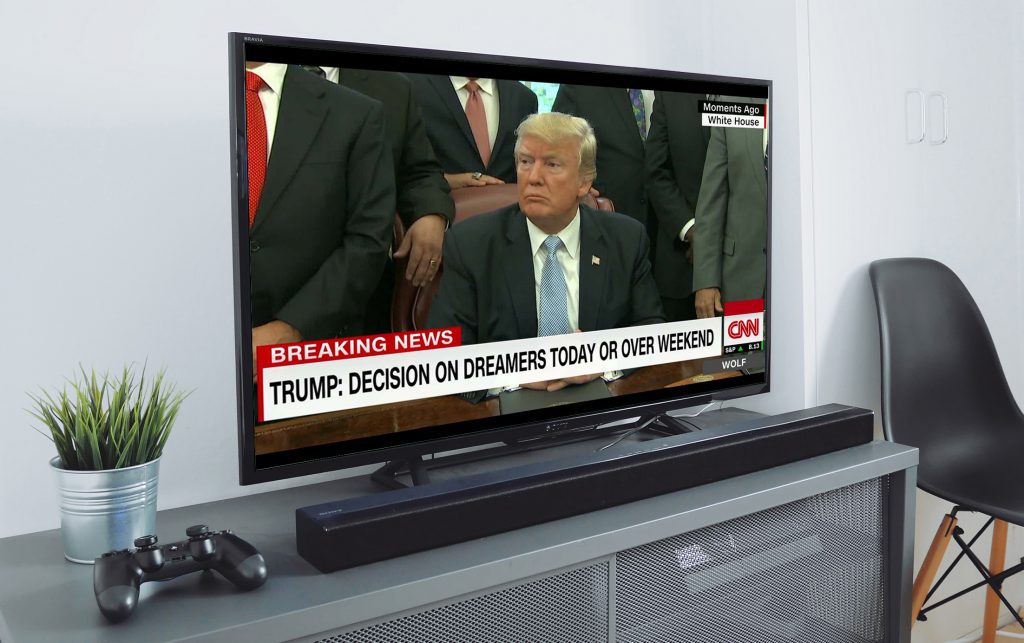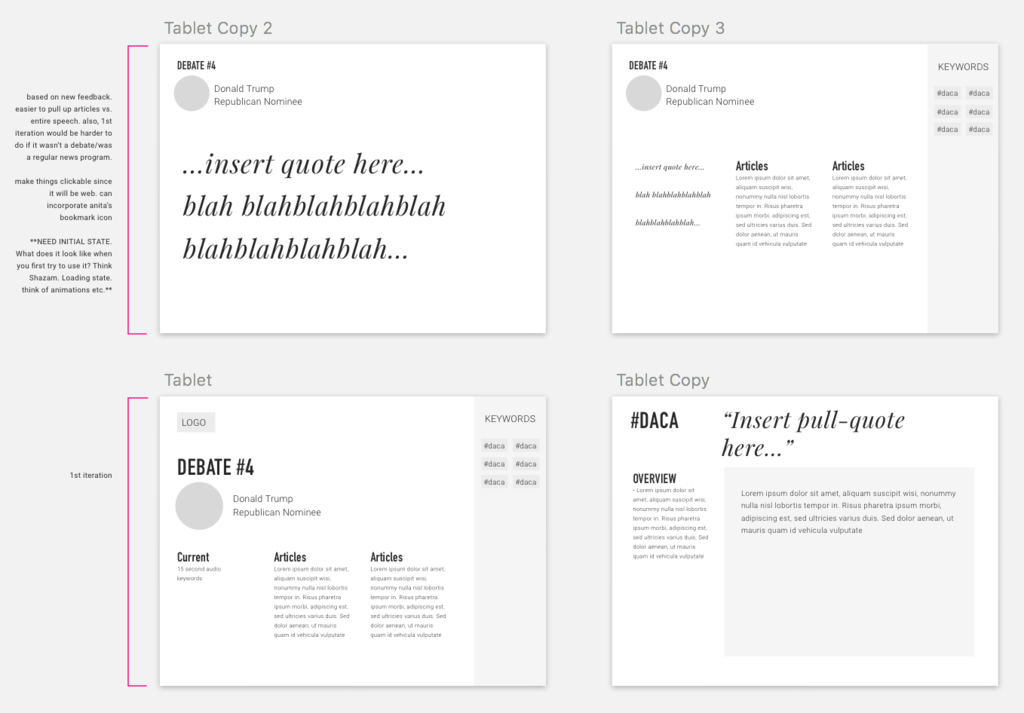Create a real working product within less than 24-hours to enhance the way we consume or create entertainment.

Come up with a new and innovative way that users either experience, consume, or create entertainment/media in less than 24 hours. Categories included Top 3 for Overall Idea, a Best Second Screen App category, and a Best Marketing Concept category.
A company called KlugTV had created a second screen app that made it easy for user to learn about characters on TV and purchase products seen on any given show in real time as they are watching that program. It was an innovative way that enhanced e-commerce for stores and products affiliated with the show or episode, as well as enhanced how users discovered and purchased products.
This concept primarily benefits businesses as it helps them creatively market to consumers in a more seamless and effortless way. Imagine if this same technology could be used to benefit viewers consuming politics and various news outlets.
Below is an example of the Klug TV interface.

“How can second screen apps change the current news landscape and how will it influence this current climate of “fake news”?”
“Fake News” has always been around, but has become an even bigger issue since the previous election.
How can people stay on top of legitimate news and how can they inform themselves of both political figures and topics in real time as they are watching or listening to debates, news segments, and other news media coverage?

Our user is someone described as “the uninformed who wishes to be informed.” This is the person, who, similar to those who create new year’s resolutions, they’d like to follow through, but the resolution or in the case, the choice to become more informed about political events and the world around them — simply falls off their priority list.
Life happens, and they simply forget. And as hard as they try, it is hard for this person to create a new routine in their already busy schedule.

One of the biggest pain points we hypothesized is a person’s ability to accurately remember what they want to search, as well as the memory to conduct the search. Things that can affect a person’s recall accuracy:
These methods create large room for errors and blind spots.
UREKA is a second screen app intended to bridge people of all levels of understanding and education in real-time through speech recognition.
With U-Reka, users can tune into political debates, broadcast news, or even an infomercial for a new marketed medicine and use their second screen app to identify the audio and pull key-words, information, and recent articles pertaining to the content they are watching
To bring true value, we had to pinpoint the integral difference and benefit between learning through UREKA vs. how people currently search topics.
One of the biggest pain points we hypothesized is a person’s ability to accurately remember what they want to search, as well as the memory to conduct the search. Things that can affect a person’s recall accuracy:
These methods create large room for errors and blind spots.
Our initial goal was to focus on a scenario where our user is just tuning into a debate. It is the third debate in a series of four presidential debates, Trump is talking about DACA and our user wants to learn more about DACA. In this scenario the points of interaction we witness are:


Ureka will then pull up relevant articles and relevant hashtags. The point of this is to also speed up the search via motion. User can swipe right on a hashtag to conduct a deep dive search, swipe down to save for later, and swipe left to discard.
The process in the duration of this hackathon was unique. We had less than 24 hours to onboard our teammates, figure out our technical capabilities and which scenario and user flow we wanted to focus on.
First I pitched the idea to my team and made sure we were all on aligned with the same vision. My main concern as project lead/project manager was maintaining this aligned focus.
Because there was such a short amount of time, we needed to create timely check-ins with both the design team and the developers. The design needed to be compatible with the technical capabilities that are being discovered as they are being discovered.

On our team, we were lucky to have two front-end developers and one back-end developer. We wanted to utilize speech recognition as well as the capability to auto-retrieve information based on that soundbite.
Tech we implemented includes:
